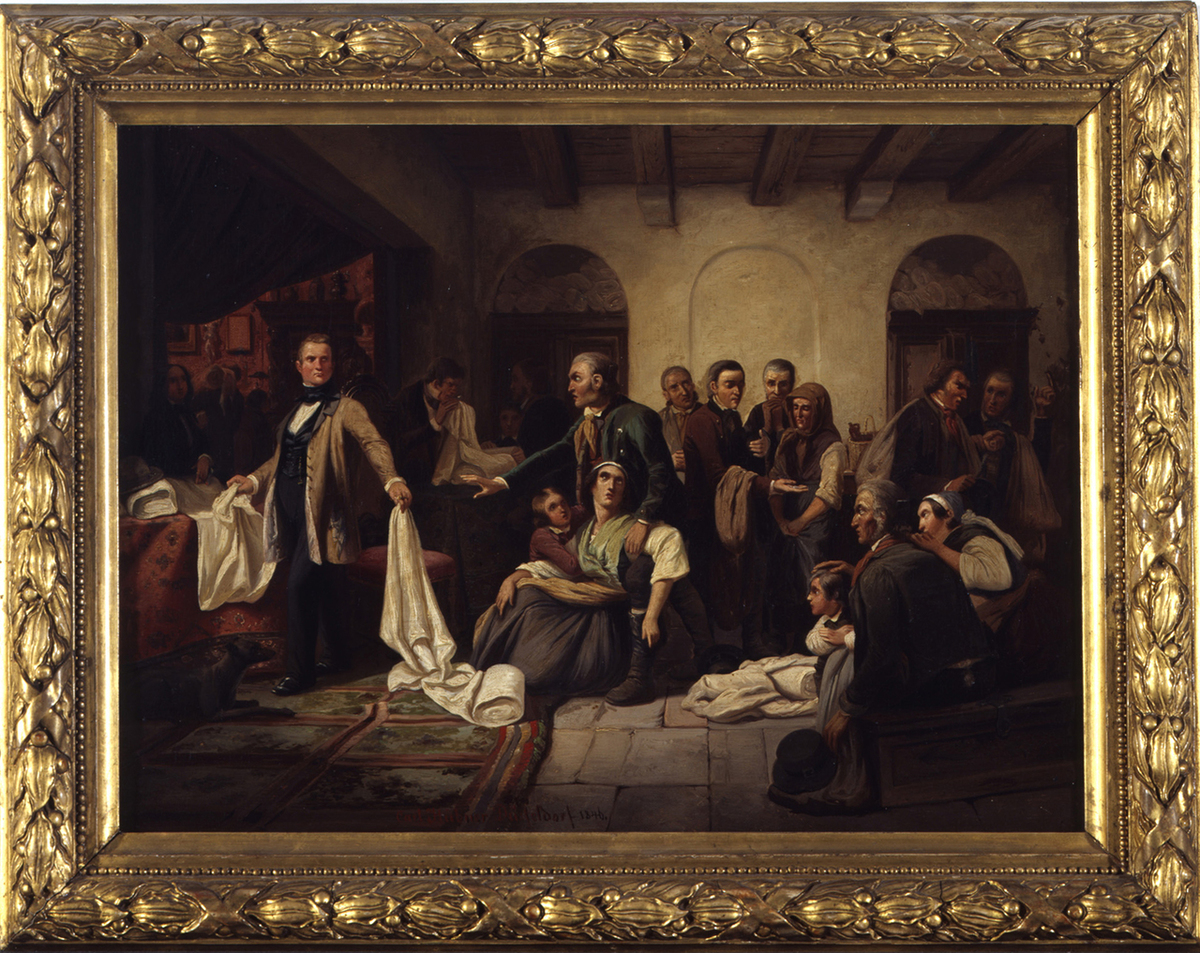Carl Wilhelm Hübner, The Silesian Weavers (1846)
Abstract
This painting by Düsseldorf artist Carl Hübner (1814-1879) shows a Silesian weaver's family in the office of a wealthy cloth merchant who criticizes the quality of their cotton cloth, seeking to lower the price. The original version of the painting dates from 1844 (this is a version painted two years later), the year of the Silesian Weavers' Revolt, which brought the plight of those working in the textile industry to wider public attention in Germany for the first time. Cotton weaving was a pre-industrial cottage industry which required the labor of men, women and children in Silesia. In the course of industrialization, spinning and weaving were mechanized, with the result that cotton fabrics were now offered in great quantity and cheaply on continental European markets. This led to the impoverishment of rural cottage industry workers and eventually to the migration of many to urban centers to find work in factories.
Source

Source: Carl Wilhelm Hübner, Die schlesischen Weber (1846). Deutsches Historisches Museum, BA 97/14961.
© DHM